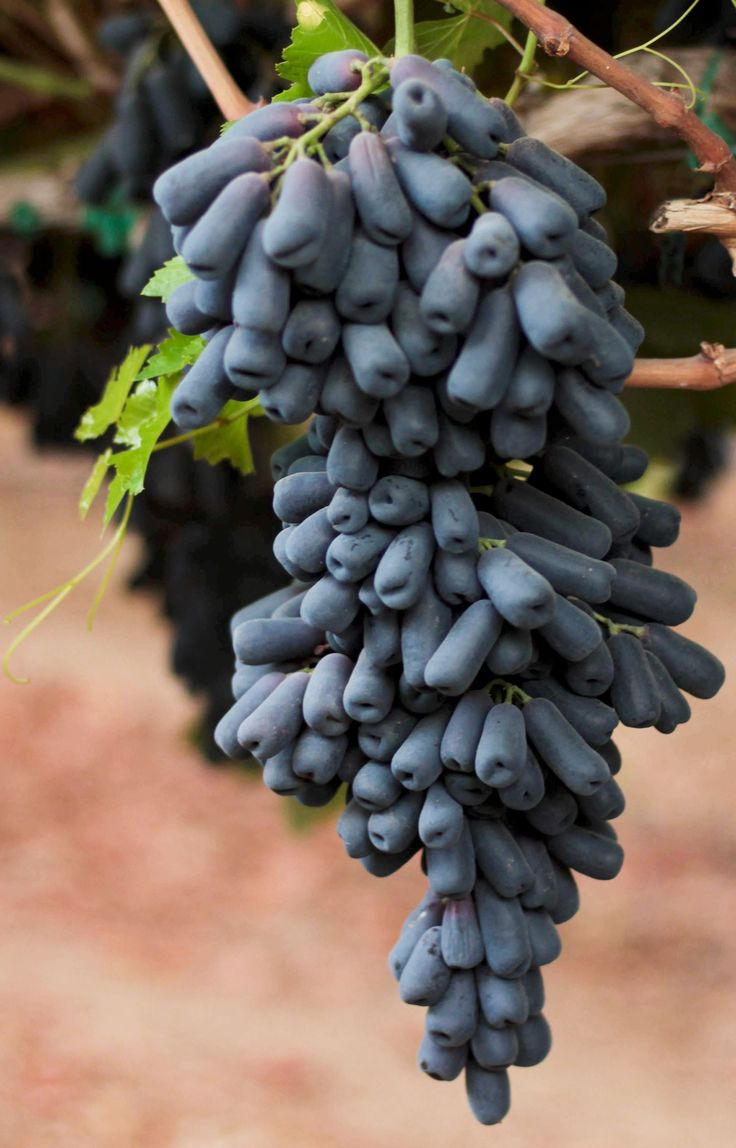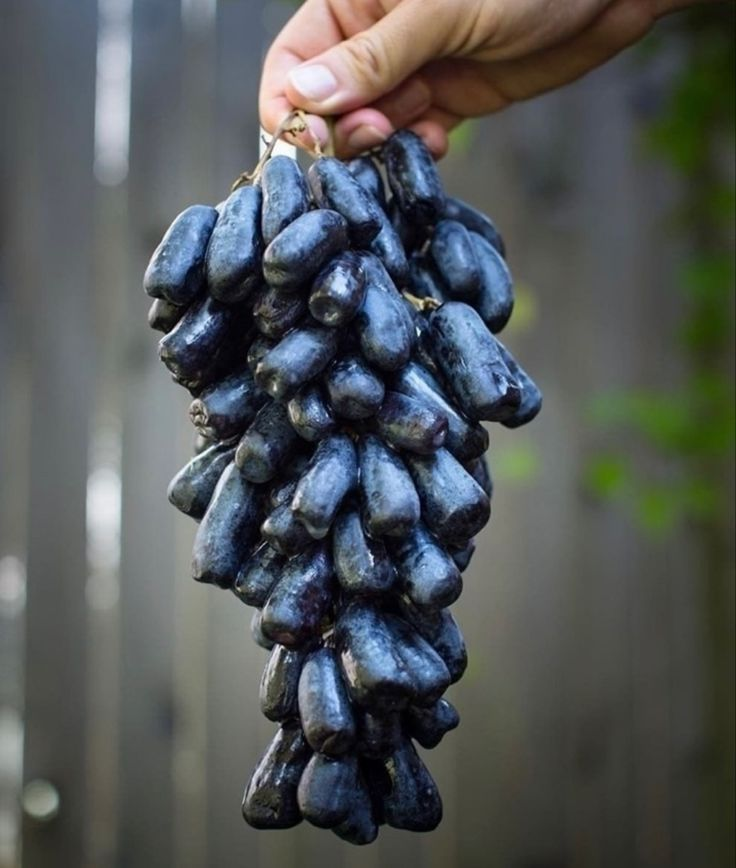The Cultivation and Management of Sapphire Grapes
Native to the United States, the sapphire grape (Vitis vinifera ‘Lan Bao Shi’) has been successfully cultivated in various regions of China, including Shandong, Xinjiang (Hami, Yuli County), and Henan (Jiaozuo, Zhengzhou).
Characteristics of Sapphire Grapes
Sapphire grapes are known for their vigorous growth, with flower buds developing early. The variety responds well to long cane pruning and short-trunk techniques, making it
suitable for high yields. The large bunches mature and color evenly, leading to consistent, high-quality production.
In northern Shandong, the grapes begin to bud in early April, flower in late May, and fruit starts to expand by mid-June. The berries begin coloring in mid-August and mature by
late August. The grapes do not drop or spoil post-maturity and can remain on the vine for over a month, showing good storage and transportation qualities.
This variety is relatively easy to cultivate, with no overcrowding of berries, no berry cracking, and minimal labor required for thinning. The fruit stems are sturdy, preventing berry
drop after ripening. Natural seedlessness allows the berries to reach up to 10 grams without the use of growth hormones.
Sapphire grapes are resistant to anthracnose, black spot, white rot, and powdery mildew, but are susceptible to downy mildew. Therefore, they are best suited for greenhouse or
rain-sheltered cultivation. Using the short-trunk technique can further increase yields.

Key Management Points at Different Growth Stages
1. Sap Flow Period
When soil temperatures reach 6-9°C, the grape roots become active, transporting nutrients to the above-ground parts to stimulate budding. As the grape’s vascular system is
loosely structured, sap flow is vigorous, and any wounds during this period can cause excessive sap loss, known as “bleeding.”
To avoid this, pruning or causing injuries during the sap flow period should be minimized.
2. Budding and New Shoot Growth
This phase lasts about 40 days, from bud break to early flowering. When daytime temperatures stabilize around 10°C, bud break begins, with new shoot growth accelerating about
two weeks later, peaking just before flowering.
During this period, all plant organs are growing vigorously, preparing for the season’s growth. It is essential to apply nitrogen, phosphorus, and potassium fertilizers in a timely
manner. Additionally, thinning excess buds and adjusting the load on the vines helps to conserve nutrients.
Key Management Tasks:
? Orchard Cleaning: Remove weeds and debris from last season’s growth, and burn or deeply bury them to prevent disease.
? Watering: In rainy seasons, if the soil is already moist, watering may not be necessary. However, after watering, loosening the soil helps maintain moisture.
? Bud Thinning: Remove ineffective buds, overly dense buds, and secondary buds before they fully develop.
? Fertilization: Apply 5-8 kilograms of water-soluble fertilizer per acre before bud break.
3. Flowering Period
The flowering phase lasts approximately 5-14 days. Optimal temperatures for flowering are 25-32°C. If temperatures drop below 15°C, proper flowering and fertilization will not
occur.
Apply fertilizers containing fulvic acid before and after flowering to promote fertilization. Additionally, tie the vines, pinch the shoots, remove secondary shoots, and ensure
adequate ventilation and light. Artificial pollination may be required for poorly pollinated bunches.
Key Management Tasks:
? Fertilization and Watering: Apply boron fertilizers five days before flowering to increase fruit set rates.
? Thinning: Remove flower clusters from weaker shoots before flowering.
? Flower Cluster Shaping: Thin out the shoulders of the clusters and remove the top 1/5 of the cluster 3-5 days before flowering.
? Pest Control: Apply Bordeaux mixture or fungicides to prevent gray mold and black spot, and protect against insect pests.
4. Berry Development Stage
During this period, from ovary enlargement to berry softening and coloring, nutrient consumption is high. Apply nitrogen, potassium, calcium, boron, manganese, and zinc
fertilizers in a timely manner.
Key Management Tasks:
? Fertilization: Apply 2-5 kilograms of water-soluble fertilizer per acre and spray foliar fertilizers 2-3 times.
5. Berry Ripening Stage
This phase lasts about 20-30 days. The focus shifts to nutrient accumulation and conversion, as berries soften, lose acidity, and increase in sugar content. Ensure adequate
phosphorus, potassium, boron, and calcium nutrients to promote even coloring and sugar accumulation.
Key Management Tasks:
? Water Management: In rainy conditions, ensure proper drainage to prevent fruit cracking and rot.
6. Post-Harvest and Dormancy Period
After fruit harvest, new shoots undergo lignification, and nutrients produced by the leaves are stored in the branches and roots. Apply post-harvest fertilizers to maintain leaf
photosynthesis and strengthen the vines for the next season.
Key Management Tasks:
? Fertilization: Apply organic and compound fertilizers before dormancy. For winter pruning, leave 1-2 buds per shoot and treat pruning wounds with antiseptic to prevent infection.

12



 Mobile: 86-13012553585 15610518510
Mobile: 86-13012553585 15610518510 Phone (Fax):86-53283197178
Phone (Fax):86-53283197178 E-mail:
E-mail:  Add:No.918 Lingang 8 Road Huangdao District,Qingdao China 266400
Add:No.918 Lingang 8 Road Huangdao District,Qingdao China 266400

